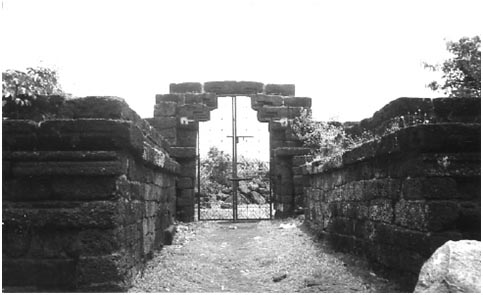Odisha State Museum

Information on Odisha State Museum (Bhubaneswar, Odisha) - History & Architecture
The Odisha (Orissa) state museum can be named as one of the prime and fascinating museums of India. Though the location of this museum has been changed several times but at present it resides in the BJP Nagar of Bhubaneswar in Odisha. All the maintenance and responsibility of this museum is borne by the Government and the Cultural Affairs sector of this state. Moreover, the historical related articles and crafts depicts the conventional history of the state of Odisha.
Odisha State Museum Architecture
The state museum of Odisha is actually termed as a museum having unique archaeological significance. It represents the traditional lifestyle and the cultural heritage of this state. The museum has a variety range of sectors consisting of natural history, epigraphy, archaeology, anthropology and many more. Other than that, the hand written manuscripts are also one of the striking features of this museum. Almost a total of 50000 such manuscripts are preserved here. All these scripts are written in palm leaves and it enclosed a massive series of subjects. Astrology, science, natural history, astronomy, mathematics etc. and many others are written in these manuscripts. One of the most earliest of these manuscripts named as Abhinava Gita Govinda of 1496 can be witnessed in this museum. Some of these manuscripts also illustrate some sceneries relating to the costumes, jewellery and expressions of different faces of this region.
The state museum also houses many astonishing compilations of copper coins, plates, statues and arts. The vast establishment of this museum helps the authority to perfectly arrange these arts and statues. The sculptures were first divided into three different styles of art like the North Indian art, Gandhara art and the Odisha style of art. Then they were sub-grouped by the different styles of images i.e., the Brahmanical art, the Jain art and the Buddhist art illustration. It was due to the sustained efforts of the collage officials, teachers and its respective students that this significant monument has maintained its legacy throughout the years for its state as well as for the country.
Odisha State Museum History
The historical significance of this museum can be notably said as one of the most peculiar one in terms of its establishment. During the year 1932 the museum was first discovered by two most remarkable historians of the Ravenshaw Collage of Cuttack. Prof. N.C. Banerjee and Prof. Ghanshyam Das were the two historians behind the establishment of this museum. Before India's independence the museum didn't have the proper established location and building. The museum was named as the State Museum only after its replacement to the Brahmananda building of the old Bhubaneswar through the Odisha Government. However, post independence the foundation stone of the specialized building for this museum was laid by the then President of India, Dr. Rajendra Prasad on 29th of December in 1957. At that time the Chief Minister of Odisha Dr. H. K. Mahtab decided to transform this institutional building into a complete museum. Finally, the building was completed in 1960 and the State museum of Odisha found its original establishment site.
Odisha State Museum Tourism Importance
The richness and elegance in their historical art and crafts has made the State museum of Odisha a must watch for tourists from all over the world. In short, there is everything for everyone. For epigraph lovers there is Epigraph gallery; miniature paintings and handicraft museum for the art loving people terracotta works, brassware works, ancient sculptures for archaeologists and many more. Therefore, the state museum of Odisha provides its visitors a whole lot of essential knowledge about. the ancient and medieval period lifestyles of people living in that society.
- Andaman Nicobar Monuments
- Andhra Pradesh Monuments
- Assam Monuments
- Bihar Monuments
- Chhattisgarh Monuments
- New Delhi Monuments
- Goa Monuments
- Gujarat Monuments
- Haryana Monuments
- Himachal Pradesh Monuments
- Jammu and Kashmir Monuments
- Karnataka Monuments
- Kerala Monuments
- Madhya Pradesh Monuments
- Maharashtra Monuments
- Odisha Monuments
- Punjab Monuments
- Rajasthan Monuments
- Tamil Nadu Monuments
- Telangana Monuments
- Uttar Pradesh Monuments
- West Bengal Monuments